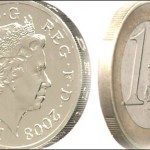Friday’s trade saw EUR/JPY within the range of 135.69-136.73. The pair closed at 136.40, gaining 0.14% on a daily basis.
At 6:58 GMT today EUR/JPY was up 0.16% for the day to trade at 136.62. The pair touched a daily high at 137.01 at 3:45 GMT.
Fundamentals
Euro zoneEuro zone current account
The surplus on Euro zone’s current account probably shrank to 18.3 billion EUR in August from 32.3 billion EUR in July. The latter has been the highest surplus figure since the all-time high of 32.91 billion EUR, registered in December 2013.
The current account reflects the difference between savings and investments in the Euro area. It is the sum of the balance of trade, net current transfers (cash transfers) and net income from abroad (earnings from investments made abroad plus money sent by individuals working abroad to their families back home, minus payments made to foreign investors).
A current account surplus indicates that the net foreign assets of the region have increased by the respective amount, while a deficit suggests the opposite. A nation with a surplus on its current account is considered as a net lender to the rest of the world, while a current account deficit puts it in the position of a net borrower. A net lender is consuming less than it is producing, which means it is saving and those savings are being invested abroad, or foreign assets are created. A net borrower is consuming more than it is producing, which means that other countries are lending it their savings, or foreign liabilities are created. A contracting surplus or an expanding deficit on the area’s current account usually has a bearish effect on the euro.
The European Central Bank is expected to release the official data at 8:00 GMT on Monday.
Italian industrial orders
Also at 8:00 GMT Italy’s National Institute of Statistics is expected to release a report on industrial new orders in August. The annualized new orders (without a seasonal adjustment) dropped 0.7% in July, while in monthly terms the indicator registered a 1.5% decrease. It measures the change in value of new orders, received by industrial sector companies, for delivering a variety of products. Only enterprises with over 20 employees are included in the survey. New orders are closely related with future industrial activity. In case the indicator drops in value, this might have a limited bearish effect on the euro.
Japans Pension Fund report
According to the Nikkei newspaper, the $1.2 trillion Government Pension Investment Fund (GPIF) is to boost its target for foreign bonds and shares to almost 30% from 23%. The planned review of funds assets may occur as late as December, because of different views on the best timing, expressed by fund officials, its investment committee and the health ministry, according to Takatoshi Ito, a government adviser. The yen lost ground against its major peers, following this announcement.
“The fact that they’ve put numbers on the reallocation implies that they’re closer to implementing it and the flows actually occurring,” said Sam Tuck, a senior currency strategist at ANZ Bank New Zealand Ltd. in Auckland, cited by Bloomberg News. “Markets will be looking at those flows as supportive for equity markets and outflows from Japan, which would both be negative for the yen based on current correlations.”
Pivot Points
According to Binary Tribune’s daily analysis, the central pivot point for the pair is at 136.27. In case EUR/JPY manages to breach the first resistance level at 136.86, it will probably continue up to test 137.31. In case the second key resistance is broken, the pair will probably attempt to advance to 137.90.
If EUR/JPY manages to breach the first key support at 135.82, it will probably continue to slide and test 135.23. With this second key support broken, the movement to the downside will probably continue to 134.78.
The mid-Pivot levels for today are as follows: M1 – 135.01, M2 – 135.53, M3 – 136.05, M4 – 136.57, M5 – 137.09, M6 – 137.61.
In weekly terms, the central pivot point is at 135.74. The three key resistance levels are as follows: R1 – 137.39, R2 – 138.38, R3 – 140.03. The three key support levels are: S1 – 134.75, S2 – 133.10, S3 – 132.11.





